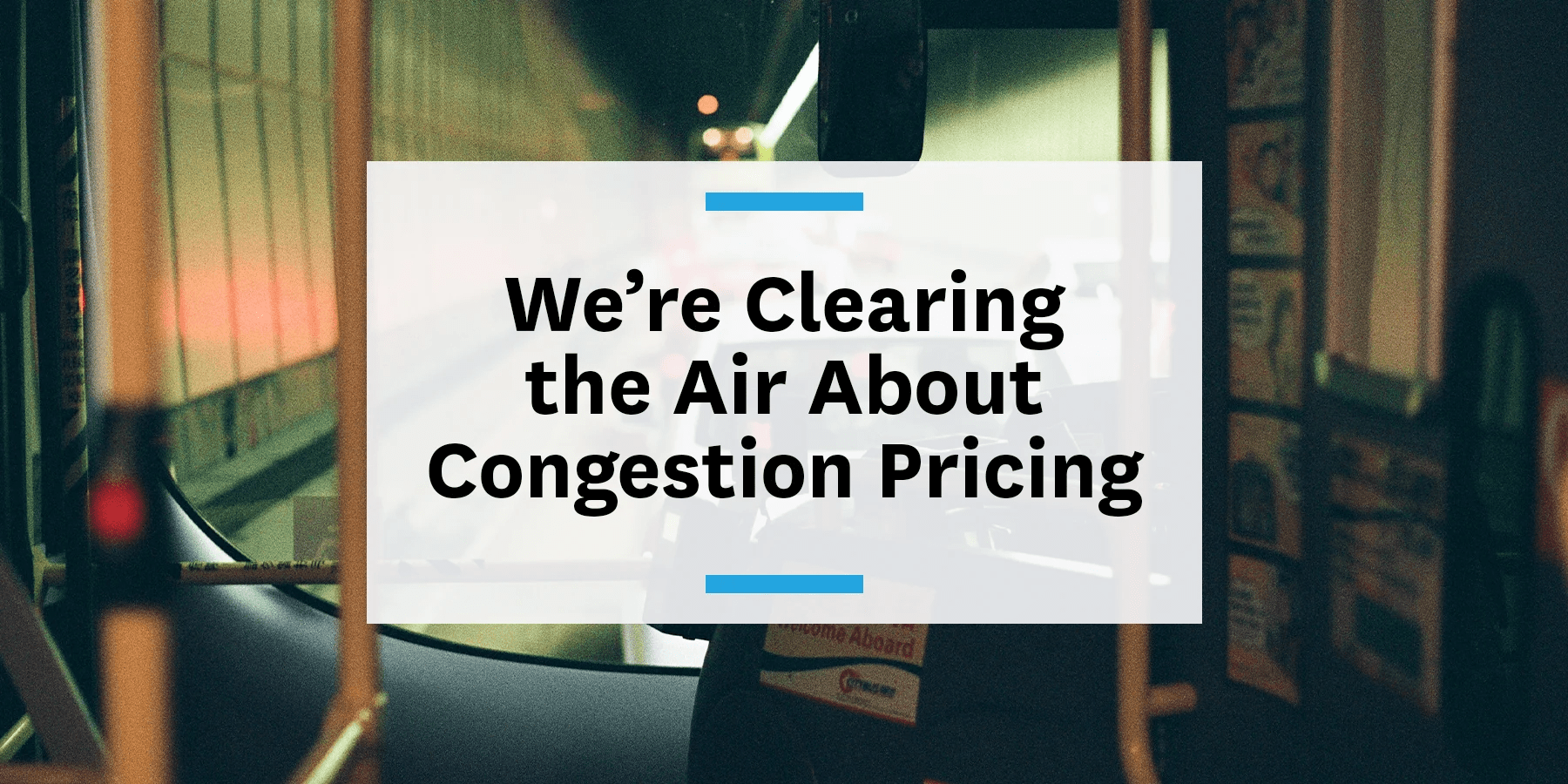It’s no secret that traffic causes stress, leads to lost time and money, and significantly contributes to global carbon emissions. As these problems continue to increase in major cities across the country, local governments are looking for solutions to keep people from driving during peak commuting hours. A growing solution? Congestion pricing.

Although commuting tolls are seen in the US already – like Virginia charging drive-alone commuters during peak hours – there’s no American city charging people to drive on city streets yet. While congestion pricing would be a big adjustment, the improvements to traffic issues are impossible to ignore.
Background
Congestion pricing is essentially a toll drivers have to pay to enter certain areas of a city during peak commuting times. While Virginia charges commuters a toll on I-66 for four hours in the morning and four hours in the afternoon, Washington, DC doesn’t charge drives to enter the city. It’s also important to note that congestion pricing isn’t in every part of the city, just in designated areas where the issue is most prevalent.
Congestion pricing has many benefits. The most important one is lower congestion on some of the city’s busiest roads. Charging people to drive to work will lead them to leave their cars at home. Although not everyone can or will opt for public transit, congestion pricing has been shown to lower congestion, improve trip times, and even raise driving speeds in the designated areas.
A second benefit is being able to raise funds to improve the city’s infrastructure. It’s no secret public transit has its flaws, but with more money coming in through congestion pricing, improvements follow. Since 2003, London has invested more than $1 billion in its transit system using money generated by congestion pricing. This means safer streets for bicyclists, pedestrians, and buses, as well as improved metro and light rail systems.
A third benefit is lowered carbon emissions from cars. Transportation causes nearly 30 percent of greenhouse gas emissions in the US — more than any other individual industry. While cars aren’t 100% to blame for these emissions, they play a serious role. London saw a 12 percent reduction in emissions in zones subject to congestion pricing.
Where it’s happening
Cities around the world have been charging congestion tolls for years now and have seen significant positive impacts.
London
London has been charging commuters fees to drive through its central business district since 2003. Covering an area of about 13 square miles, commuters who drive through this district are charged a one-time daily fee of $16.20. Not only did the number of private vehicles decrease by 39 percent in the congestion zone, but bicycle ridership also increased by 210 percent in the same areas.
Singapore
Singapore is a pioneer when it comes to congestion pricing, with its tolls in place since 1975. The city originally charged congestion pricing through the Area License Scheme (ALS). Under this program, drivers had to purchase a pass for $1 per day or $20 per month. This system was in effect until 1998, when the city replaced it with the Electronic Road Pricing System (ERP).
Since it implemented ERP in 1998, Singapore has grown in population by 44 percent while lowering its traffic volumes by an estimated 15 percent. Not only has Singapore been able to lower traffic, but its daily public transit ridership totaled nearly 7.5 million people per day in 2018 – the city’s highest ever.
New York
Although not in effect just yet, New York is slated to be the first US city to charge drivers to enter certain areas. The plan was approved in April 2019. While the official start of the program isn’t scheduled until 2021, the city has already awarded a $507 million contract to a company to build and maintain the system.
While this process is still in the early stages, an early proposal suggested a $12 charge for drivers traveling in certain areas of the city. This central business toll system is expected to raise $15 billion, which will be dedicated to fund upgrades to the MTA.
Congestion pricing works
There’s always going to be an adjustment period for these kinds of changes, but the benefits and improvements will put any doubts to rest – just ask Stockholm. When congestion pricing was first implemented in 2006, less than 40 percent of people supported the new charges. After a seven-month trial period during which commuters saw the positive impacts, around 70 percent of people were in favor of the new pricing and voted to make it permanent!
Embracing these new changes will benefit everyone, even though it will take some time. The money raised goes back to making commuting better by improving public transit systems, adding more bike lanes, and fixing roadways.




